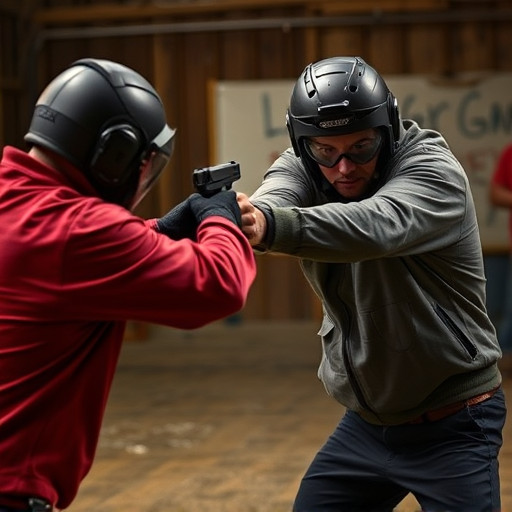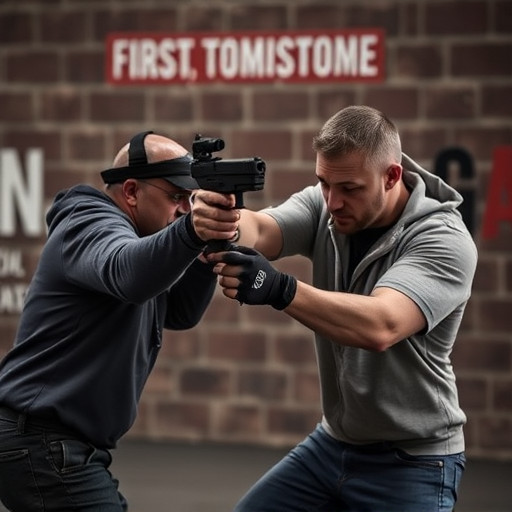For beginners considering stun guns with safety features, clothing thickness significantly impacts voltage penetration. Thicker fabrics reduce effectiveness, making it crucial to choose devices designed to overcome barriers caused by materials like denim or leather. Advanced safety features such as automatic shut-off, motion sensors, and LED lights should be prioritized, along with lightweight designs for easy carry and longer prods for better fabric penetration. Reputable brands providing clear manuals and warranty support ensure safe, effective use of stun guns equipped for beginner safety.
Voltage penetration through thick clothing is a critical factor for self-defense enthusiasts, especially those considering stun guns. This beginner’s guide, “Understanding Voltage Penetration: A Beginner’s Guide,” delves into the science behind electrical conductivity and how clothing thickness impacts stun gun effectiveness. We explore safety features in stun guns designed to protect users and bystanders, providing insights for choosing the right device for your needs, particularly when emphasizing safety-focused models.
- Understanding Voltage Penetration: A Beginner's Guide
- The Role of Clothing Thickness in Electrical Conductivity
- Safety Features in Stun Guns: Protecting Users and Bystanders
- Choosing the Right Stun Gun for Your Needs
Understanding Voltage Penetration: A Beginner's Guide

Voltage penetration, or the ability of electrical current to pass through materials, is a concept that holds significant importance, especially when considering personal safety devices like stun guns. For beginners delving into the world of self-defense, understanding this phenomenon is crucial. When it comes to stun guns with safety features, knowing how voltage interacts with clothing can be a game-changer.
Thick clothing, while providing insulation and protection, can also act as a barrier against the electric shock intended by a stun gun. The penetration depth of voltage through fabric varies based on factors like material composition, thickness, and moisture content. For instance, dry cotton clothing may not conduct electricity effectively, but a wet or synthetic garment could significantly reduce the effectiveness of a stun gun. Beginners should opt for stun guns designed to overcome these barriers, ensuring that their safety device can penetrate thick clothing to deliver a powerful and reliable shock when needed.
The Role of Clothing Thickness in Electrical Conductivity

The thickness of clothing plays a significant role in how well electrical current, including that from stun guns with safety features designed for beginners, can penetrate and pass through it. Generally, the thicker the fabric, the more resistance it offers to electric flow. This is because clothing materials act as barriers, slowing down or blocking the movement of charged particles, especially when compared to air or thin materials like paper.
For instance, a beginner using a stun gun with safety features may notice that its effectiveness decreases when targeting someone dressed in thick denim or leather jackets. The current will struggle to pass through these layers, leading to reduced stun impact. Understanding this dynamic is crucial for individuals considering the purchase of stun guns as personal safety tools, as it highlights the importance of clothing choices in situations where electrical conductivity matters.
Safety Features in Stun Guns: Protecting Users and Bystanders

Stun guns designed for beginners often include a range of safety features to protect both users and bystanders. These features are crucial in ensuring responsible use and minimizing accidental harm. One such safety measure is the stun gun’s build quality; high-quality materials and construction prevent unexpected failures or malfunctions, reducing the risk of injury during use. Additionally, many models feature automatic shut-off mechanisms that activate after a set stun duration, preventing prolonged exposure to electrical shocks. This is especially important for beginners who might hold the device longer than intended.
Another vital safety feature is the stun gun’s output control settings. Some devices allow users to adjust the voltage level, enabling them to deploy the weapon at lower intensities in crowded or sensitive environments. This can be a game-changer when navigating challenging situations, as it allows for effective immobilization without causing severe harm. Beginners should familiarize themselves with these safety features and understand their stun gun’s capabilities and limitations to ensure safe and responsible use.
Choosing the Right Stun Gun for Your Needs

When selecting a stun gun, especially for beginners, prioritizing safety should be at the forefront. Look for models equipped with safety features like an automatic shutdown mechanism that activates after a set stun duration, preventing accidental or prolonged shocks. Some advanced options include motion sensors and LED lights, which enhance usability in low-light environments while adding extra layers of protection.
For your specific needs, consider lightweight, compact designs ideal for easy carry and concealed wear. Longer prods can penetrate thicker fabrics more effectively, ensuring a successful shock even when targeting areas covered by clothing. Always opt for reputable brands that provide clear user manuals and offer warranty support to ensure a safe and effective experience.
Understanding how voltage penetrates through clothing is essential, especially for those considering stun guns as personal defense tools. As this article has shown, clothing thickness significantly influences electrical conductivity, impacting the effectiveness of a stun gun’s shock. When choosing a stun gun, opt for models with built-in safety features designed to minimize bystander harm and ensure user safety. For beginners, these advanced devices provide peace of mind while empowering individuals to make informed decisions about their personal protection.
